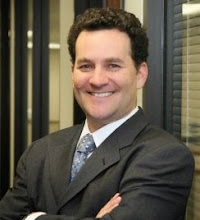The plaintiffs filed a putative collective action under the Fair Labor Standards Act (FLSA) and class action under Iowa state law, seeking overtime compensation for time spent donning and doffing protective gear. The district court certified both the collective action under the FLSA (29 U.S.C. section 216) and the class action under F.R.C.P. Rule 23.
At trial, the parties stipulated that Tyson owed the plaintiffs for donning and doffing certain gear, but left other liability and damage questions for the jury. The plaintiffs introduced anecdotal evidence, video recordings of employees donning and doffing, and an expert's testimony regarding his study of the average time spent donning and doffing. A second expert analyzed Tyson's records of time worked and amounts paid and calculated amounts owed.
The jury found for the plaintiffs and awarded $2.9 million of the $6.7 million requested. Tyson appealed, and the Eighth Circuit Court of Appeals affirmed. The Supreme Court also affirmed, holding as follows:
Assuming, without holding, that a section 216 collective action is no more difficult to certify than a Rule 23 class action, certification of both actions can be analyzed under Rule 23 standards.
"Representative evidence," including statistical sampling, may be introduced in class actions, as in other actions, to establish or defend against liability. Admissibility depends not on whether the case is a class action, but on whether the evidence is "reliable in proving or disproving the elements of the relevant cause of action." The representative evidence here filled a gap left by Tyson's failure to keep records of donning and doffing time and was a permissible means of proving each employee's individual damages. Use of such evidence did not deprive Tyson of its ability to litigate individual defenses.
Wal-Mart Stores, Inc. v. Dukes, 564 U. S. 338 (2011), "does not stand for the broad proposition that a representative sample is an impermissible means of establishing classwide liability." Certification in Dukes failed because the plaintiffs could not show any common policy of discrimination. The plaintiffs could not use representative evidence to show such a policy in a class action any more than they could have used it to show discrimination in an individual action. In contrast, the representative evidence offered here would be admissible in an individual action to prove liability.
Representative evidence is subject to challenge under Daubert v. Merrell Dow Pharmaceuticals, Inc., 509 U. S. 579 (1993) as being "statistically inadequate or based on implausible assumptions," but Tyson did not raise such a challenge in the district court.
The Court declined to issue "broad and categorical rules" regarding the use of representative and statistical evidence.
In FLSA actions, inferring the hours an employee has worked from a study such as Mericle’s has been permitted by the Court so long as the study is otherwise admissible. Mt. Clemens, supra, at 687; see also Fed. Rules Evid. 402 and 702. The fairness and utility of statistical methods in contexts other than those presented here will depend on facts and circumstances particular to those cases.The Court did not address the argument, raised in the petition for certiorari but not briefed, that a class may not be certified if it contains class members who suffered no damages.
The Court also did not address Tyson's alternate argument that the plaintiffs cannot ensure that no damages are paid to class members who were not injured. The question is not yet ripe because the damages have not been disbursed, nor has the district court indicated how they will be disbursed. The Court remanded for the district court to determine this issue. The Court also noted that the plaintiffs requested bifurcation of liability and damages in order to ensure that uninjured class members did not recover, and Tyson "argued against that option and now seeks to profit from the difficulty it caused."
Chief Justice Roberts concurred in the opinion in full and wrote separately, expressing skepticism that the district court can devise a means of disbursing funds only to injured class members. Because the court cannot tell how the jury arrived at the $2.9 million verdict, it cannot determine which class members the jury found to have suffered actual injury. Without such a means, the verdict cannot stand, as Article III would not permit a court to award damages to one who did not suffer an injury. Justice Alito joined in this portion of the concurring opinion.
Justice Alito also joined in the dissenting opinion authored by Justice Thomas. Justice Thomas would have held as follows:
Before class-action plaintiffs can use representative evidence [as common proof of an otherwise individualized issue], district courts must undertake a rigorous analysis to ensure that such evidence is sufficiently probative of the individual issue to make it susceptible to classwide proof. The District Court did not satisfy that obligation here, and its failure to do so prejudiced defendant Tyson Foods at trial. The majority reaches a contrary conclusion by redefining class-action requirements and devising an unsound special evidentiary rule for cases under the [FLSA].Whether any particular employee worked more than 40 hours in a given workweek is an individual issue, and the district court erred in failing to analyze whether this individual issue would be susceptible of common proof. Plaintiffs' evidence demonstrated that the donning and doffing for each employee varied, that individual issues predominated, and that class certification was not appropriate.
The opinion is available here.






No comments:
Post a Comment
Note: Only a member of this blog may post a comment.